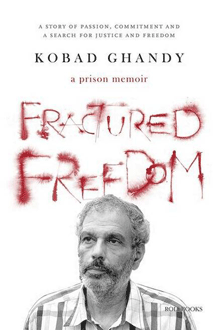Rarely do we hear the cry of freedom in India so vividly and passionately recounted as in the lives of two people intertwined in marriage and committed to a common cause — freeing the marginalized for centuries people of this country. Here we have a passionate account by icon of the socialist-communist (Marxist Leninism ) movement who was arrested and put away in jail for ten years without any tangible evidence. Courtesy the insensitivity of a capitalist democracy — which doesn’t see beyond its own need to enslave and crush its own people. Here is a prison memoir told through the eyes of a man who along with his wife Anuradha and many others became icons of a student movement of the 70s, which yearned for freedom for the many and not just the wealthy and privileged of a top-heavy lop-sided civilization created to spawn autocracy and anarchy.
Kobad Ghandy’s prison memoir `Fractured Freedom’ (Roli Books, hardcover, Rs595) is a book all of us must read to understand the contemporary times we live in and if we love this country.
RAJAN NARAYAN remembers his friends Kobad and Anuradha Ghandy and goes down memory lane after reading Kobad Ghandy’s book recounting how an unjust system breaks the brave and bold-hearted…a story of our times, of a path which perhaps many would shy away from in today’s times!
THIS is book about two people who were charged with being Naxalites because they were members of the Maoist wing of the Communist party of India (Marxist Leninist). The ideology of the party was the liberation of workers, tribals, the underprivileged who were oppressed by the capitalist system. It was a movement started in Bengal by Charu Mazumdar some 50 years ago at a place called Naxalbari. The movement was at its peak in the Mumbai of the 70s where it attracted the brightest and the best of the students’ community.
The movement was headed by two professors of the Bombay University , namely Devanathan of the Economics Department and Vasanti Raman who lectured in sociology; they started an alternative university calling it the Progressive Youth Movement (PYM). They used to conduct study classes on Marxism for students of the elite colleges of Bombay like Elphinstone, Wilson’s, Xavier’s…to sensitize young minds about the inequalities in society. The Leninists are Naxalite who believed in armed insurrection against the State.
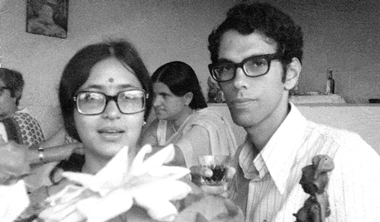
Kobad Ghandy studied in Doon school, he was the son of a very well to do Parsi family. His father was the finance director of Glaxo. He followed in father’s footsteps and went to Oxford in England to do his chartered accountancy. During his apprenticeship he became acutely conscious of the racism widely prevalent in the UK. He learned history in the British Library and realized to what extent India had been exploited by the British. Kobad also became sensitive to the plight of the working class in the UK. At that time UK was dominated by textile mills where both men and women were paid a pittance of a wage which they were encouraged to spend on drinking gin to keep themselves subdued (thus earning the factories the slang description of “gin factories”).
Despite his growing awareness of racial and class discrimination Kobad did very well in his exams for chartered accountancy, surprising his teachers by scoring better than his white counterparts! But the Kobad who returned to India was very different from the carefully upper class Kobad who had gone to the UK. He shared his feelings with his father who was fully supportive of his son in his views.
KOBAD started working in the Mayanagar slum behind his sea-facing apartment in Worli, Bombay. The Dalits here were the lowest in the hierarchy of society who were converted to Buddhism by Babasaheb Amebedkar. Kobad also part of the alternate university set up by the leftist professors of Bombay University. It was at May Nagar slum that he met his wife Anuradha Shanbag, she was a student of Elphinstone college, later doing her Masters in sociology. Her parents were CPI members, her father was Ganesh Shanbag (chief public prosecutor of Bombay) while mother Dr Kumud Shanbagh, also a Marxist, worked for Cama hospital. Kumud also played a major role in setting up the SNDT.
Both Ganesh and Kumud sympathized and emphathized their daughter’s involvement with the Left movement. Anuradha Ghandy worked with Kobad in Maya Nagar and was part of the Dalit movement. After several days and nights or organizing protests making hand-made posters and personally putting them up at prominent locations they would retire to his flat in Worli. Over a period of time they fell in love and got married with the consent of both sets of parents.
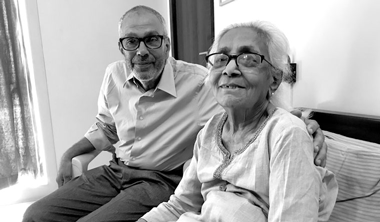
They then moved out to Girdoli, the tribal belt near Nagpur, to fight the ruthless exploitation of the tribal population . They spent several years in the jungles of the Vidharba. Unlike many other hi fi Naxalites they lived the simple life and practiced what they preached. Inspiring Sureendra Kulkarni who was a press advisor to Atal Behari Vajpayee to call Kobad the new Gandhi. Kulkarni and Kobad were prisoners together at Tihar Jail for a while. Kobad had been suddenly picked up on the streets of Delhi by the special branch of the Andhra Pradesh police and questioned about his involvement in the Naxal movement. Andhra was one of the major centres of the Naxal movement at that time. The police believed that Kobad Ghandy was amongst the top leaders of the movement and that he was a senior member of the Politburo of the CPI (ML). They wanted the names of the other leaders from him. He was finally arrested under the Terrorist Act and spent ten years in five different jails.
KOBAD GHANDY was kept apart from the other prisoners because he was considered very dangerous. During his stay in prison he met not just top gangsters like Chota Rajan (who was propped up by the then BJP government to take on Dawood Ibrahim). He also met several political leaders who were serving sentences for corruption. Kobad by then was in his early 50s and was very ill, after living for years in the forests with very poor nutrition.
He needed medical attention constantly. Kobad describes how the jail system is intended to break the spirit of the prisoner. The worst of the jails was of course Tihar Jail, the largest jail in the country located in New Delhi. Tihar has been home to Subroto Roy of Sahara and many of the accused in the 2G Telecoms scam. Among the others whose company was forced on him was the alleged senior Kashmiri terrorist Afzal Guru. He and Afzal got along very well as so called terrorists, both highly educated and Afzal brought Kobad up to date with the muslim bortherhodo which overhrew President Nasser of Egypt. Afzal was hanged hastily on February 9, 2013, and is buried alongside Maqbool Bhat in Tihar jail.
Kobad kept in touch with his Doon school classmate Gautam Vohra. To quote from a letter he wrote on February 18, 2013: “Just as I was settling down to read again after my cataract operation our entire existence was destabilized.” Kobad talks of Afzal as the most well read person in Tihar jail who had a very liberal view of Islam. Kobad was impressed with Afzal’s bravery at the time of hanging stemming from his belief in jannat. Apparently he told Kobad that when he died he would waiting to meet Mohamad, Rumi, Iqbal, and the other prophets. Kobad believes that Afzal was demonized by the State.
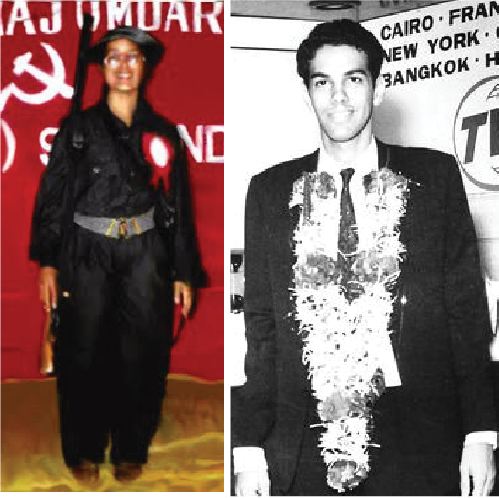
Kobad was shifted to the Hyderabad jail as the Andhra Pradesh police started a terror campaign against the youth and engaged in fake encounters. This was where Kobad discovered the major difference between his generation and the younger generation of Marxists. When he was in Hydaerabad jail he realized that the younger generation knew little of the revolutionary movement though the Telangana had led the Marxist revolution. Kobad was kept in what was called Naxal Ward. From Hyderabad he was shifted to the Vishakapatnam jail where he became friends with Chadda Bhushanam, a tribal leader. He was from the forest areas and was part of the gurukul movement. From Vizag, Kobad was shifted to the Hazari bagh central jail in Jharkand. Jharkand has seen as a series of revolts against the British and zamindars and was a Naxal hub.
While in jails Kobad got back to his Parsi roots and extensively read the Zarathustra and quotes the prophet who wrote as far back as 1500 BC:
With an open mind,
Seek and listen to all the ideal.
Consider the most enlightened thoughts,
Then choose your path,
Person by person, each for oneself,
Turn yourself not away from the three best things:
Good Thoughts, Good Words, Good Deeds.
(Mansahani, Gavshani and Kuvshani in the original)
KOBAD GHANDY was very sick towards the end of his life but managed to survive, his wife Anuradha died before him ironically of falcirum malaria. For me reading the book was like going down memory lane as I was part of the movement though I was not attached to any particular group. But it was a privilege to have known so many idealistic young people who vanished into obscurity as they did not realize their mission despite their deep commitment. On a lighter note I used to be friendly with all of them who retained their love for theatre and literature and the fine arts, and I could as the art critic of The Financial Express give them invites for plays and theatre festivals.
Excerpted from ‘Fractured Freedom, A Prison Memoir’ by Kobad Ghandy….
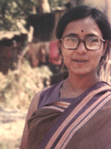
WHEN I met Anu she was a student leader at Elphinstone College, and active in the Alternative University. The first time I saw her in class I saw an extremely bubbly and articulate student, raising questions, making points and being exceedingly communicative. I was very attracted to her naturalness, her spontaneity and liveliness. She was an outgoing person and did not have any of the inhibitions that stem from societal constructs. At the time we met, Anu was in a relationship with a fellow student, a sportsperson who was not politically inclined and the relation ended sometime after her activities grew.
Injustice would trigger anger in her, she could get very annoyed, but it would not linger and she would move on. She never stood on ego or prestige nor did she hold grudges. And this was not an effort, it came naturally to her. My temperament and qualities were almost totally antithetical to hers. Soon after we met, she began working with me in Mayanagar and elsewhere in the city. In the early days, most of our time together meant meetings, lengthy study classes, or sitting at my Worli Sea Face flat making posters, with little time off. We would go out late at night to put up posters, and together with others sit at the Worli home to make the handwritten posters. At most, we’d see some plays together, many by her brother and Satyadev Dubey, mostly at the Chabbildas and Prithvi theatres. It was during the Emergency, when most activity came to a halt, that our love really blossomed and we got to meet more often and spend some time together. Sometimes, after a long night of posting posters in textile mill areas of Lower Parel she would spend the night at my Worli flat nearby.
Jyoti Punwani, who knew Anu well before I did, had this to say about that time:
‘When I first met her in 1970, Anuradha Shanbag was the belle of the ball in Mumbai’s Elphinstone College. A petite bundle of energy, bright eyes sparkling behind square glasses, her ready laughter, near-backless choli and coquettish ways had everyone eating out of her hands, professors included. Elphinstone then was an intellectual hub. The Bangladesh war was just over, drought and famine stalked Maharashtra. Naxalism had come to Mumbai, at that time the industrial capital of the country. Anu, majoring in Sociology, was everywhere, inviting Mumbai’s leading radicals to talk about the reasons for the drought, putting up posters that proclaimed “Beyond Pity” and urging students to get involved with the crisis in the countryside, defending this stand against those who felt a student’s role must be limited to academics and at the most, “social work.”’
During the 1971 Bangladesh war, Anu had visited refugee camps in Madhya Pradesh with a group from college, the horrifying conditions she encountered there had an indelible impact on her, radically changing her thinking and turning her towards revolutionary politics. While Anu and I worked together for all these years there was much I could have learnt from her but didn’t. First, she was extremely democratic and had the knack of discussion and interaction with even those who held opposite and different views. I still recollect the numerous animated discussions she would have with Maharashtra’s top theatre personalities like Satyadev Dubey, Mahesh Elkunchwar, Vijay Tendulkar and also with Sahitya Akademi Award winner Marathi writer and translater, Milind Champanerkar, originally from Amravati – people with differing views (Dubey had exactly opposite views) – without any sort of animosity. In fact, they all seemed to be very fond of her. So also it must have been in her university with her professors and students, where she had an excellent reputation. Not only was I far more rigid, I was also less knowledgeable than her in all these varied fields, with mine being restricted to Marxism, caste issues and at best economics. Her interests were widespread. Also, in the organisation, while I attracted much animosity from those with whom I differed, not Anu, though she may have had the same feelings as me. She accepted people as they were, I didn’t. She was an extrovert, lively and friendly and therefore very open: I tended to be reserved and reticent.
I wrote an article about Anu on what would have been here sixty-third birthday, some of which I am excerpting here. In it, I tried to bring out her qualities and values that made her a model for not only any activist, but even for common people living their lives. Some of these were her straightforwardness, sense of responsibility, her love for fellow human beings, her passion in anything she took up, her abhorrence of any form of patriarchy or caste, and most of all standing up for justice even in minor issues. Anu was, in fact the epitome of truth. Pretenses, hypocrisy, deceit, cunning, manipulativeness were totally inconceivable to her. She would frankly speak what she thought, believed, felt. There was no question of putting on an act, playing games, etc. That was why she was normally at ease and put others at ease. She was an extremely principled person. It is an unjust system or environment that Truth and Principles are the first to be sacrificed at the altar of power.
Anu, with her straightforwardness and frankness, was an example how one can move towards freedom. Most of us bind ourselves in thousands of complexities, always playing to the gallery, never being ourselves, covering up our flaws, etc. — in short, we live life deeply alienated from ourselves. Rather than being free we become prisoners of our situation. Such a person will only fuel an atmosphere of lack of freedom in any organization or surrounding. Anu, on the other hand, had the least complexities, and her innate naturalness resulted in a relaxed atmosphere for those around her (people need not be on guard), where everyone could be themselves. Anu generally brought a fresh breeze of freedom wherever she went.
Anu’s warmth and depth of feelings was combined with a sharp intellect, giving an excellent balance between heart and mind. If we turn to the second aspect of love – sex-love, Anu was a truly liberated person unconstrained by he thousands of invisible threads of patriarchy/feudalism which tend to bind even progressive people in India with archaic social mores. On this issue we tend to have two extremes here – at one end women’s liberation is promoted as the vulgarity associated with Western culture, at the other end is opponents (both HIndutvavadis and Islamists) promote the Mother image’ orSati –Savitri’ culture. In fact, both are two sides of the same coin of commodifying women – the former as sex-objects, the latter as children-producing machines. Anu strongly felt that women had their own feelings, emotions, desires which need to be respected, and patriarchal relations, however subtle, tend to suppress these.
Anu never lost her child-like simplicity through all the vicissitudes of the movement and her academic life. This was no easy task, specifically for a woman in India’s feudal-dominated culture. How then was Anu able to sustain her naturalness, innocence and simplicity in an increasingly alien environment? Besides her innate goodness and the support she received from many an honest and sincere cadre, as also from the masses, the reasons were mainly two – first, she never aspired for post and pelf, whether in the organizational sphere or in her academic life; so, there was no need to resort to tricks to climb any ladder. Second, her commitment and high sense of responsibility and discipline resulted in her ability to excel with ease. Those with superficialities, inefficiency, irresponsibility, etc, and yet aspiring for posts, favors, importance are the ones who tend to resort to all forms of chicanery, flattery, manipulativeness, one-upmanship, vindictiveness, duplicity, etc. in order to push others down and push themselves up the ladder. The latter’s commitment to the masses and country is generally partial as it comes with a caveat – self-promotion.
Anu’s naturalness remained with her till the very end. Her every emotion, feeling, desire was reflected like a mirror. When hurt she would easily cry, when angry her face would get flushed, and, of course, when cheerful and happy her eyes would dance around like a bird. No doubt the appreciation she got from many a genuine activist, helped her sustain the beauty of her innocence. More on her activities later. Now let us turn to our families, the type of atmosphere we were brought up in from where we turned to become revolutionaries.
